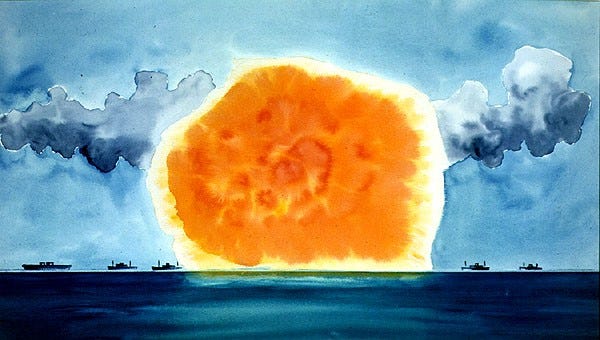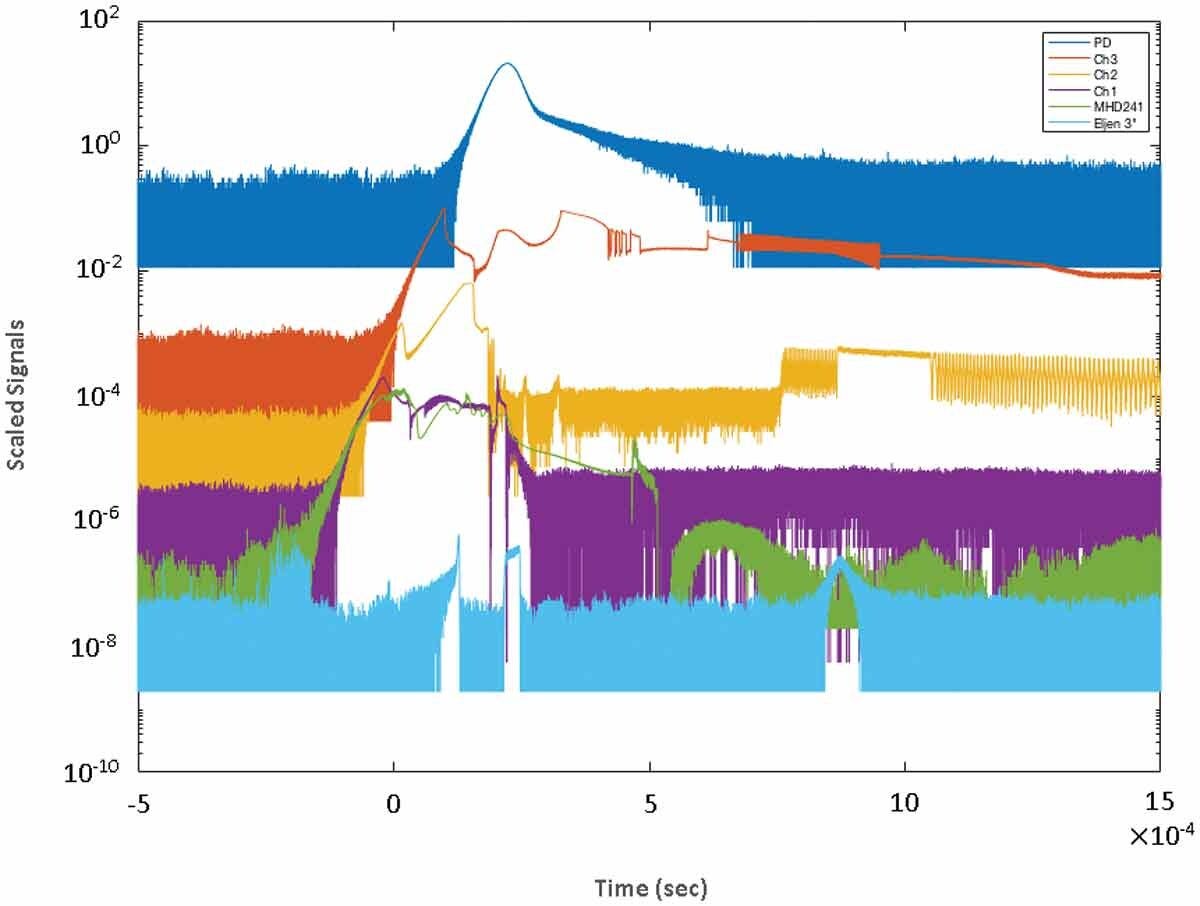The faith based existence of nuclear weapons
Nuclear weapons are a figment of our imagination - and propaganda carpet-bombing

A novel weapon is deployed in war and an observer is commissioned to survey the damage caused by the weapons. The observer reports that the pattern of destruction is similar to that produced by conventional weapons.
Extensive testing of the weapon is then performed. The testing of the weapon is filmed but the films are initially withheld from the public. Then, some 70 years later, some of the films are released to the public, when the simulation of explosions is literally child’s play.
Numerical models of the weapon are subsequently published. The models demonstrate proof-of-concept of the weapon and successfully predict some laboratory measurements. However, details are missing. Furthermore, the models are incorrect in one fundamental respect.
That, of course, is the story of the atom bomb. It is the story of a weapon whose existence has little basis in reality.
Here are the specifics:
On August 6, 1945, the United States attacked Hiroshima, Japan. The New York Times announced that the attack involved the use of an “atomic bomb” and that the bomb was equivalent in power to 20,000 tons of TNT. In describing the attack, then-president Truman stated: "The force from which the sun draws its power has been loosed against those who brought war to the Far East."
On November 3, 1945, The Sydney Morning Herald reported on a survey of the damage of Hiroshima: “At a press conference [de Seversky] said the atom bombs fired the imagination more than they fired Hiroshima and Nagasaki. He said the majority of the 60,000 deaths in Hiroshima resulted from falling parts of flimsy structures.”
The Guardian reports that, between 1946 and 1958, 67 nuclear bombs were tested in the Marshall Islands. The tests were reportedly filmed. However, films of U.S. nuclear tests were not distributed until 2017.
The concept of an atom bomb is described in The Los Alamos Primer. The concept is to produce an explosion by assembling a sufficient quantity of fissile material. Once assembled, the fissile material undergoes an exponentially rising nuclear chain reaction. The nuclear chain reaction is extinguished as the fissile material expands but not before an Earth-shattering amount of kinetic energy is released.
The primary elements of the The Los Alamos Primer model are: (a) A uranium-235 nucleus undergo fission instantaneously upon reaction with a neutron. (b) Nuclear fission of uranium-235 produces 2.2 neutrons, on average. (c) Free neutrons created in the fission subsequently either exit the fissile material or react with another nucleus. (d) The lifetime of a free neutron - the time between its creation and its subsequent reaction with another nucleus - is 10^-8 seconds.
Importantly, the Los Alamos Primer model predicts an extraordinarily fast nuclear chain reaction. Specifically, the nuclear chain reaction in purified uranium-235 would consume a significant fraction of the entire fissile material in under 1 microsecond. Subsequently, numerous numerical methods have implemented the Los Alamos Primer model.
In one study, the model predicts the magnitude of the energy released in a nuclear explosion is predicted to be at least 2 tons of TNT. Few technical details of the study are disclosed.
The model accurately predicts the total energy release in nuclear chain reactions in experimental models of an atom bomb. In “Preliminary Results of GODIVA-IV Prompt Burst Modeling”, the heat release of a “burst” nuclear chain reaction was predicted with 29% accuracy.
The model accurately predicts the duration of “burst” nuclear chain reactions as measured with the full width at half maximum. In “Preliminary Results of GODIVA-IV Prompt Burst Modeling”, the FWHM release of a “burst” nuclear chain reaction was predicted with 17% accuracy.
The model fails to predict the prolonged decay of the “burst” nuclear chain reaction.1 The source of the prolonged decay of the nuclear reaction is unclear. The burst nuclear chain reaction is expected to exhibit a prolonged decay due to “delayed neutrons” but at a smaller scale by orders of magnitude. This suggests that the Los Alamos Primer model of the burst nuclear chain reaction is incorrect.
There is no credible evidence for the existence of nuclear weapons. The only forceful argument for the existence of nuclear weapons is fully circular: they are too dangerous to discuss openly. We - as a society - believe in nuclear weapons only because it has never occurred to us to question their existence. We believe in their existence - as a society - because it has not occurred to us that our government is rotten to the core.



